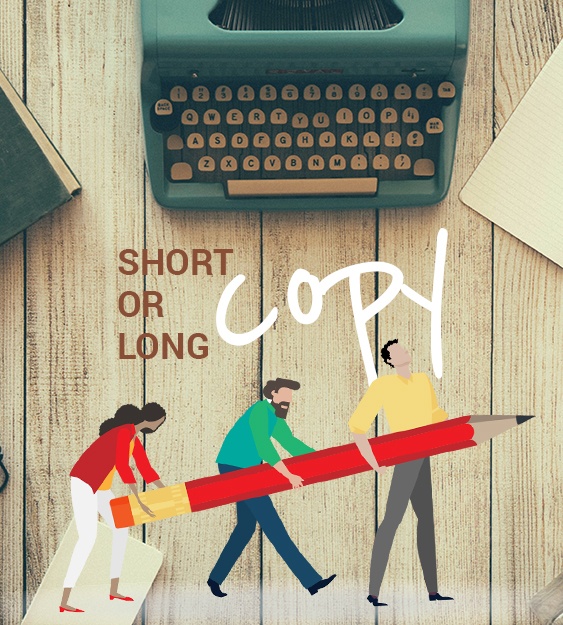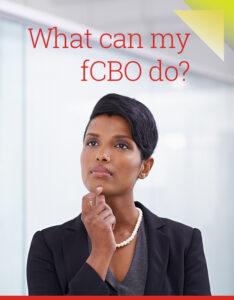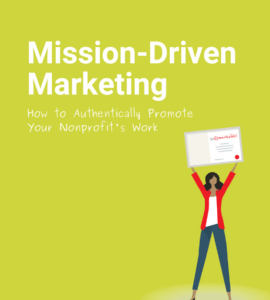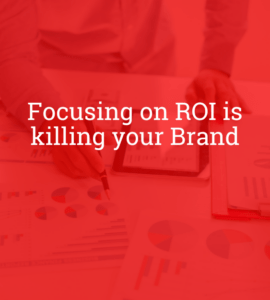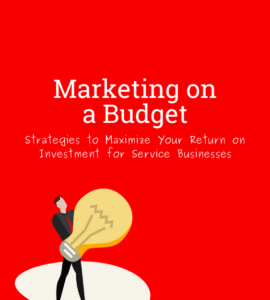The mind thinks in pictures, you know. One good illustration is worth a thousand words. But one clear picture built up in the reader’s mind by your words is worth a thousand drawings, for the reader colors that picture with his own imagination, which is more potent than all the brushes of all the world’s artists.
– Robert Collier
What’s good copy, anyway? What’s makes copy really bad? How is copy able to inspire audiences to connect with their favorites brands? The better question may be, how can copy inform and even persuade audiences to produce an action that will benefit a respective business? You see, that’s the difference between copy that is only used to fill space in marketing collateral, and copy that is crafted to ensure any business and organization’s long-term success. Copy in marketing refers to any text, whether it is published on digital platforms such as websites and social media or printed such as magazines and newspapers.
Copy is everywhere. In the most simple of terms, copy is anything you see that is written for the purpose of branding, marketing, or promotions. Copy is just everywhere you go. Honestly, it’s EVERYWHERE. It can be found at your local grocery store. It can be located in your favorite coffee shop. Heck, it can even be found at the doctor’s office. Anything that is used with words to promote a business, like signage, is copy. You simply can’t escape copy. Take a quick walk outside; you will find copy on streets, on bus stops (and on actual buses) cars (think taxis, Uber/Lyft). You probably have even stepped on copy once before. Honestly, without copy, advertisements would not be able to create as much of an impact. If there is anything to take away from this, is that good copy – no- great copy, will resonate with target audiences.
Long vs. Short Copy
What’s the difference between long and short copy? Typically speaking, anything less than 1,000 words is considered short copy. Anything above this word count, typically around 2,000 words, would generally fall under the long copy category. Some of the best examples of short copy include emails, slogans, taglines, product descriptions, and social media copy. Long-form copy includes, but is not limited to, blogs, articles, newsletters, and website content. They all have their benefits. These forms of copy can have the power to create a positive influence when conversions are concerned. Copy, no matter how long or short, can help your business obtain the growth you need without spending thousands. Of course, if you do have the funds to incorporate marketing technology into your content strategy, then we highly recommend doing so to ensure maximum conversions.
The question of whether to use long or short copy depends on various factors, such as audience, your brand, and your company’s goals and objectives. Generally speaking, if you want to inform your audience about a topic that is generally hard to understand or digest, then we suggest incorporating long-form copy. If you believe that your clients may doubt your brand, which typically tends to generate a lack of trust, then it is important to utilize long-form copy to provide the most detailed information and ensure your target audience builds a certain level of trust in your brand. By doing so, you will be more likely to build relationships and ultimately secure long-term customers/clients. That is exactly what all businesses aspire to, right? When it comes to short-form copy, if you are concerned about making immediate sales and ensuring your customers purchase your product and services in a timely manner, using the power of short-form copy would be beneficial to your business. A commanding call-to-action can certainly create the impact and impression on the audiences you are searching to build relationships with. If you are having a hard time thinking about whether to use long or short copy, consider this: Readers only consume 20% of content on a page. So if you are concerned about the attention span of potential targets, we would strongly suggest utilizing shorter copy.
Skimpy Copy: Just Skip It!
Long-form content generally does not get as much love as shorter copy. Short-form copy like the type used on social media can generate headlines and create a lasting impression using the right combination of a few words. We understand the power of short copy, and here at b.iD, short copy is certainly one of our favorite forms of copy that we produce for our clients. However, we (and many of our clients agree) are not content with just making quick and easy headlines in the news with no staying power. They want to make sure they can have a constant stream of audiences on their digital platforms for conversions. When thinking about your business’s long-term goals, like growth, staying power, and revenue, we believe you should cut the skimpy copy.
Did you know that the average content length for a web page that ranks in the top 10 results for any keyword on Google has at least 2,000 words? As we explained in our Likkle Bites episode 18, “Does longer copy equal higher rankings?” with Dana, Owner and Creative Director of b.iD. She explains succinctly that when it comes to consistent conversions, the best way to inform, persuade, and engage prospective customers/clients is through the power of long-form copy. If your business or organization is concerned about improving SEO, enhancing user experience, and are constantly thinking about the long-term success and sustainability of your business, you must incorporate long-form copywriting into your content/copy strategy to ensure you are on track to reaching the goals and objectives you have set out of fulfilling for your business, as explained in our “Website Do’s: Cut the Skimpy & Low-grade Copy?” Likkle Bites episode 17.
Creating Copy They Want to Read
Did you know that consumers spend over 5 hours per day on their smartphones consuming content of all types? When the content is engaging, entertaining, and provides the necessary stimulation for consumers, 5 hours may seem like 5 minutes. That is the power of copy. Copy has the power to nurture and build connections that can be advantageous to your organization. When you are well aware of your company’s goals and objectives, your key audiences, and what your brand stands for, you will be able to create copy that audiences want to read. Copy that is digestible to your audience resonates. Great copy captivates. Who likes boring copy anyway? The most prolific marketers understand that copy has to be engaging if audiences spend long periods of time scrolling or going through mobile devices, newspapers, magazines, or any other media platform. Great copy is able to inspire interest and genuine curiosity. You can do that too by utilizing copy that has a purpose. At b.iD, we say that branding is everything. But without quality copy, branding may not be as impactful or remarkable.
Quality Copy Makes the Difference
Being able to produce copy that informs, persuades, and inspires audiences to purchase your products and services is no easy feat. Let b.iD be your team behind innovative content that elevates your brand to new heights. Contact the team to get started.
Copyright © 2014-2024 b.iD LLC. All Rights Reserved.
Boutique Creative Agency providing Branding Specialists, Logo, Copywriting, Print & Web Designs, Public Relations, and Marketing solutions in Houston, Texas






